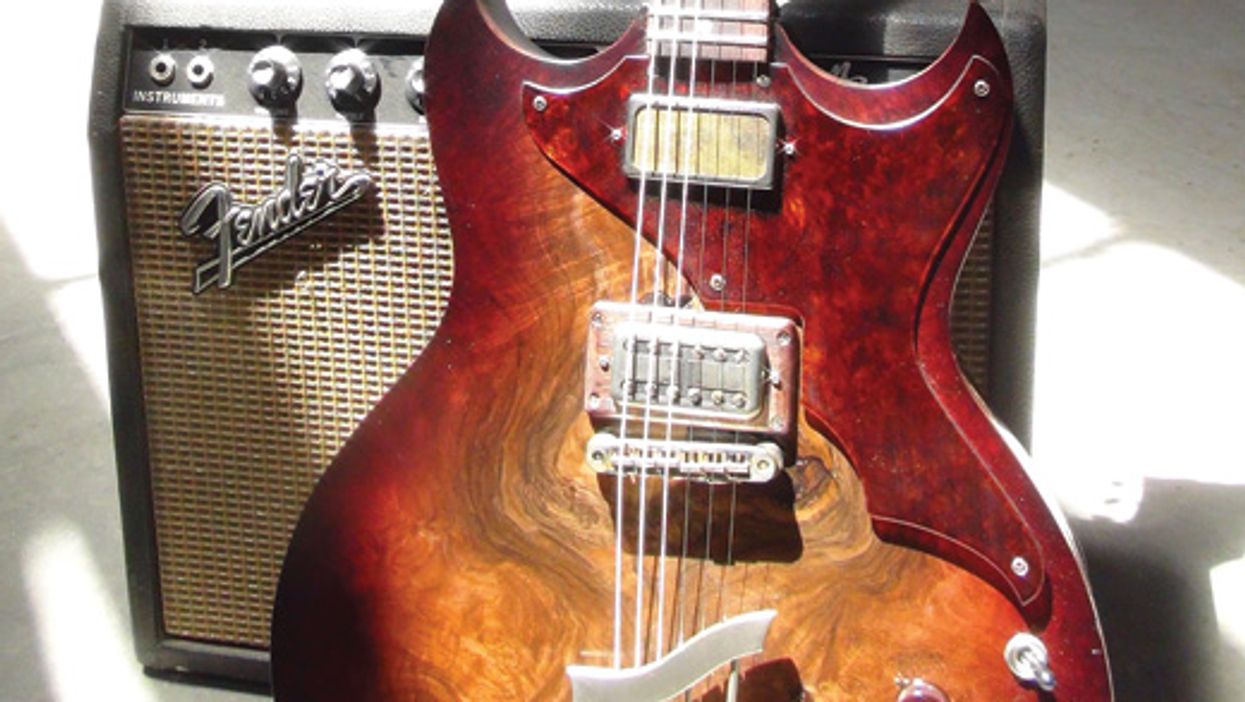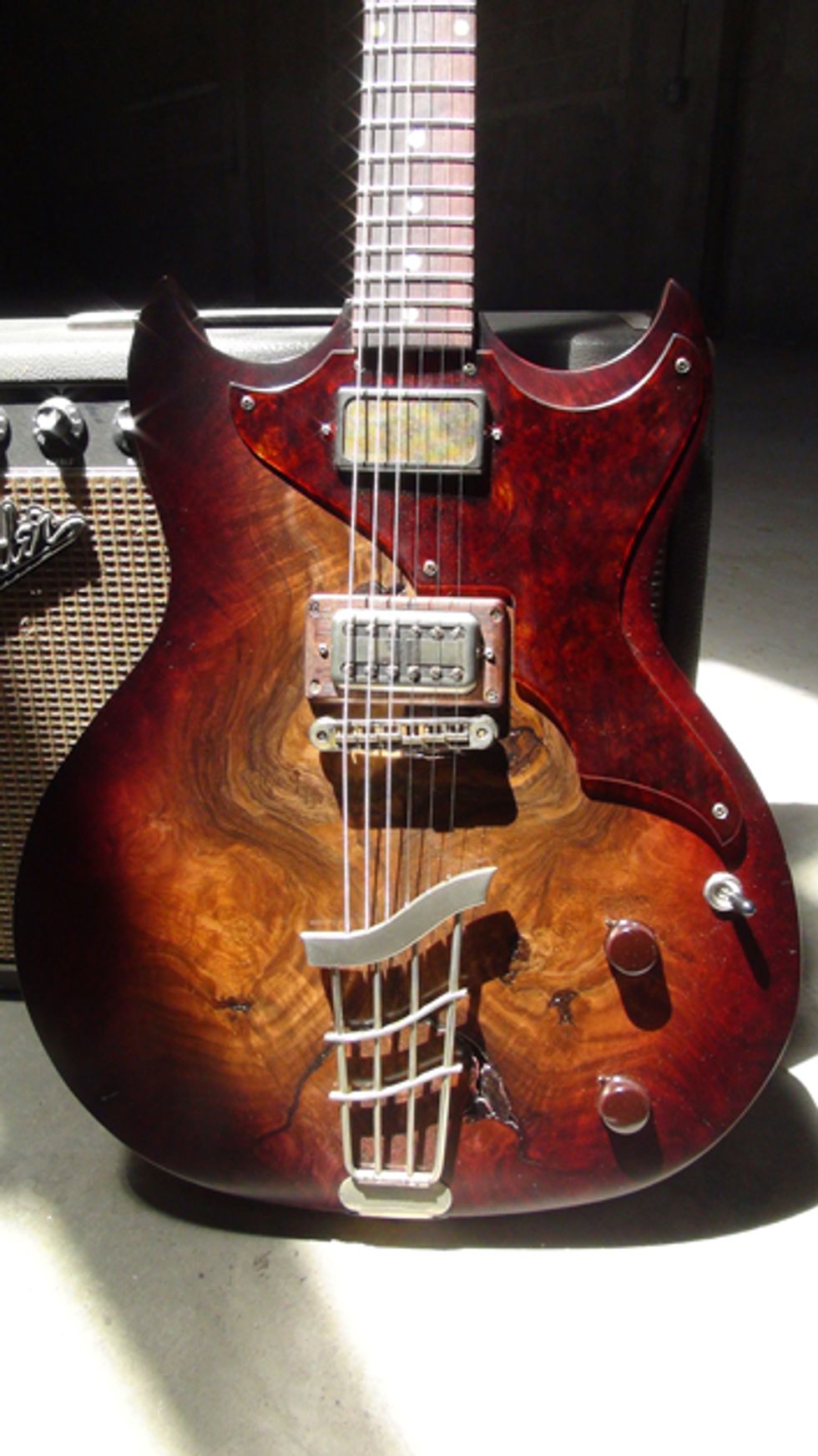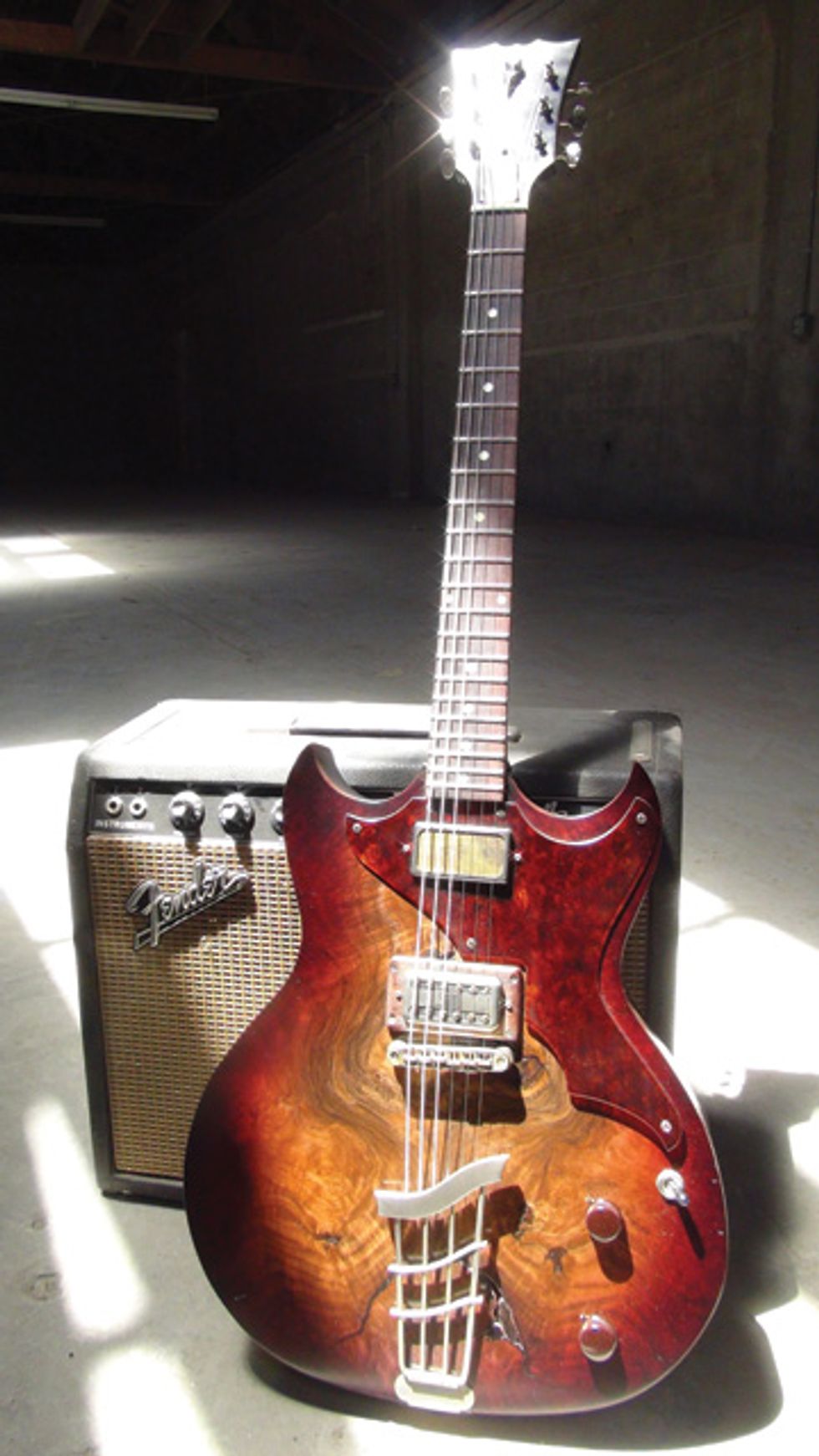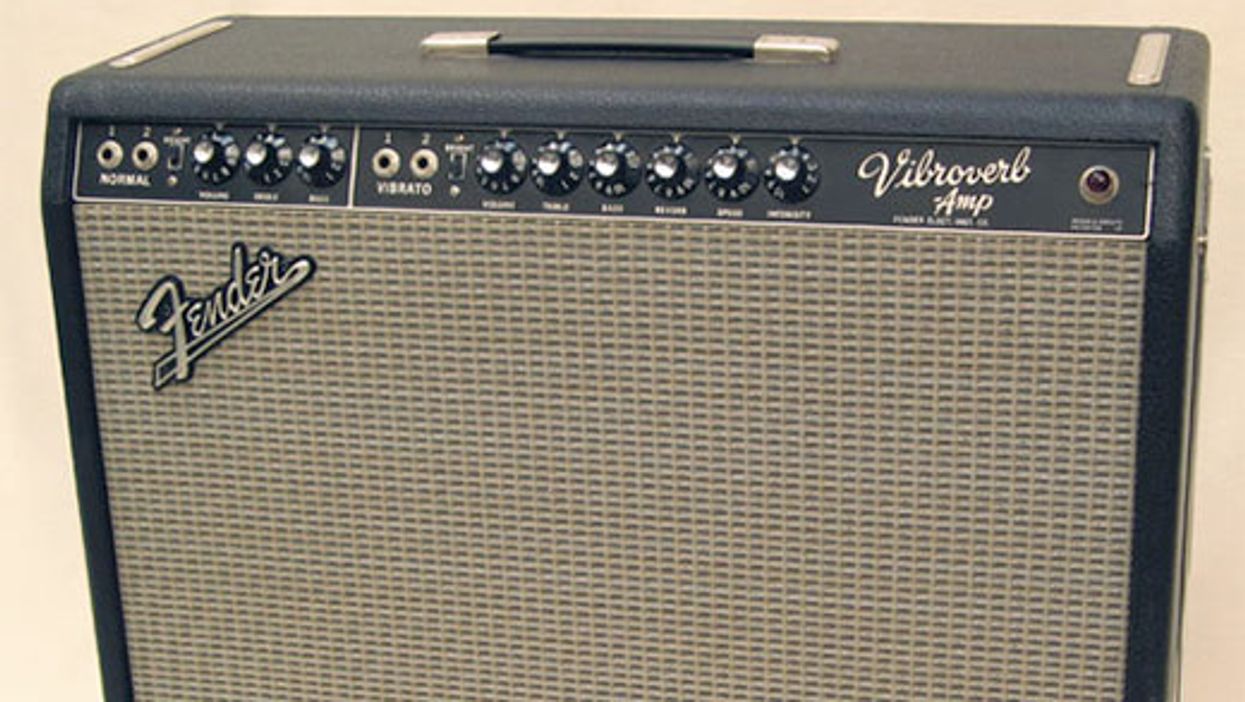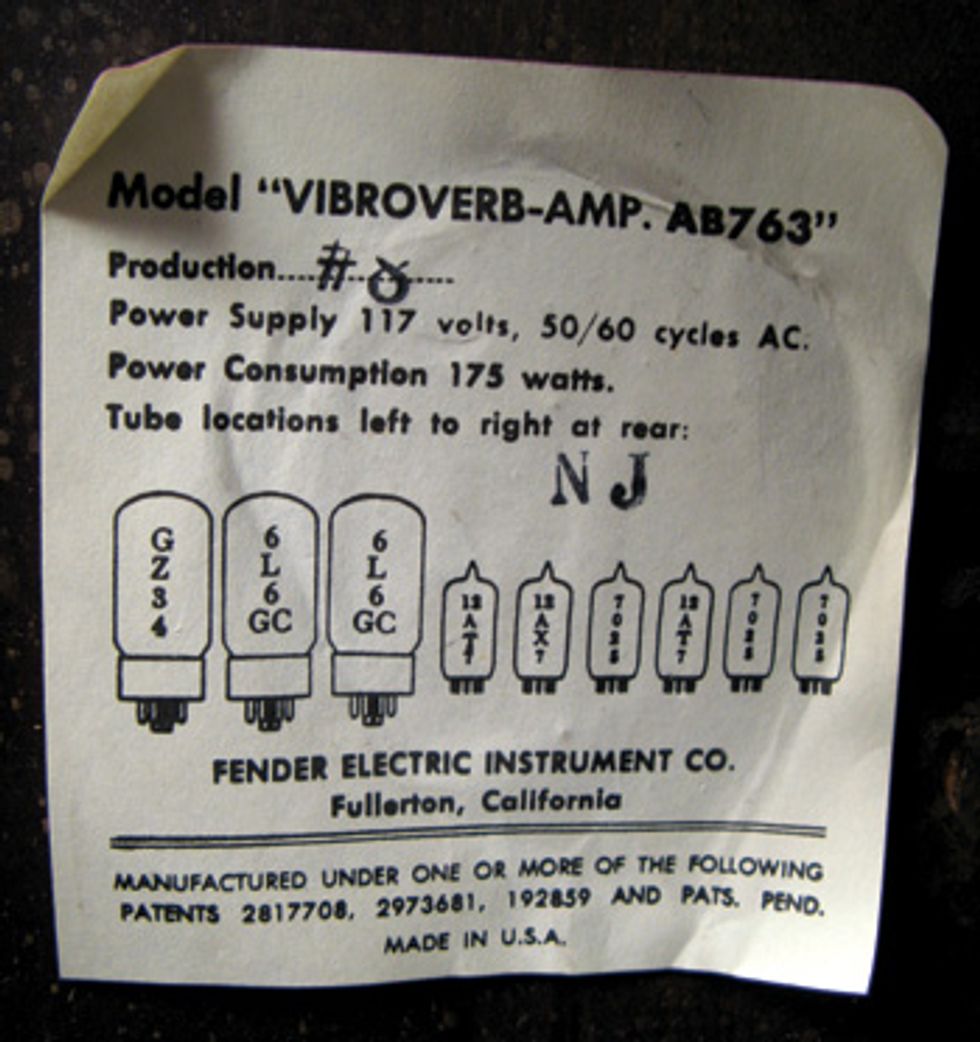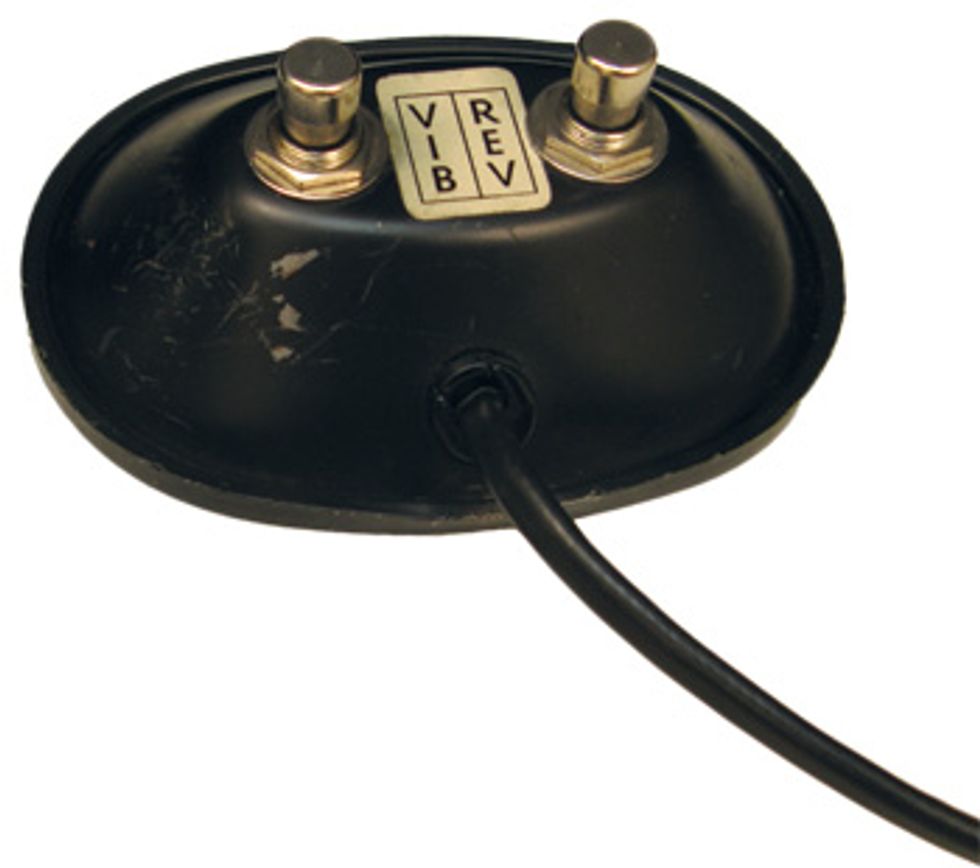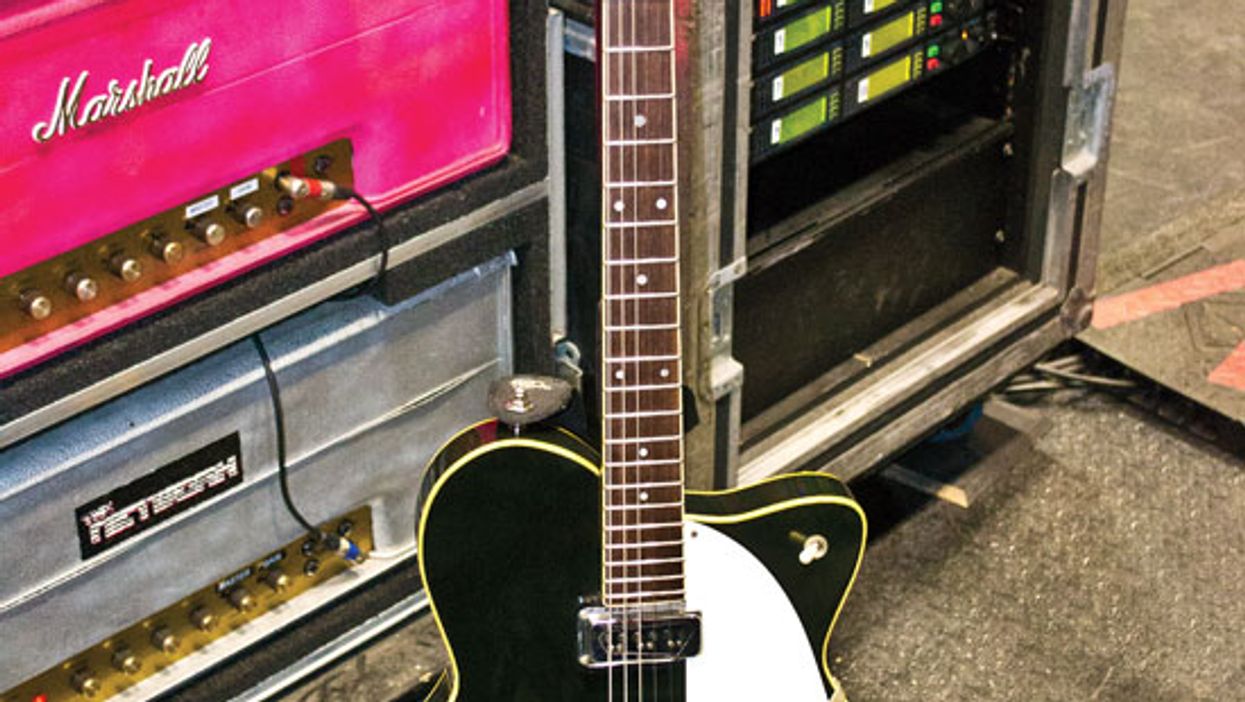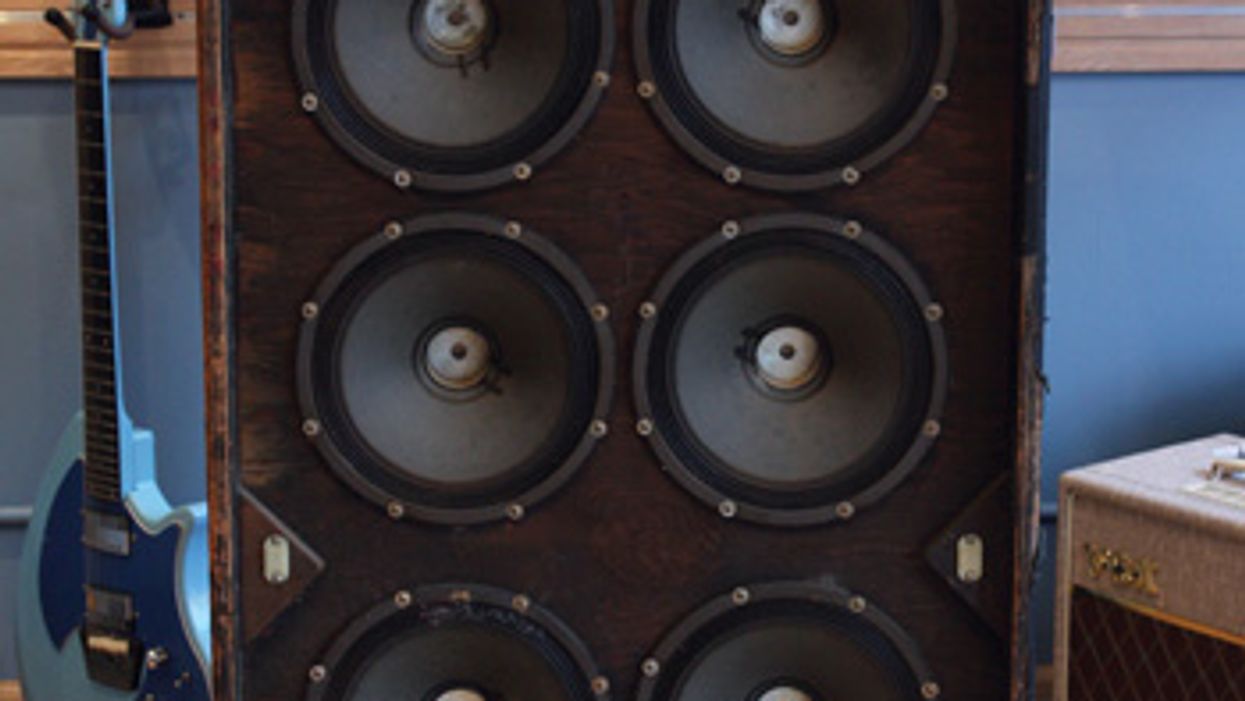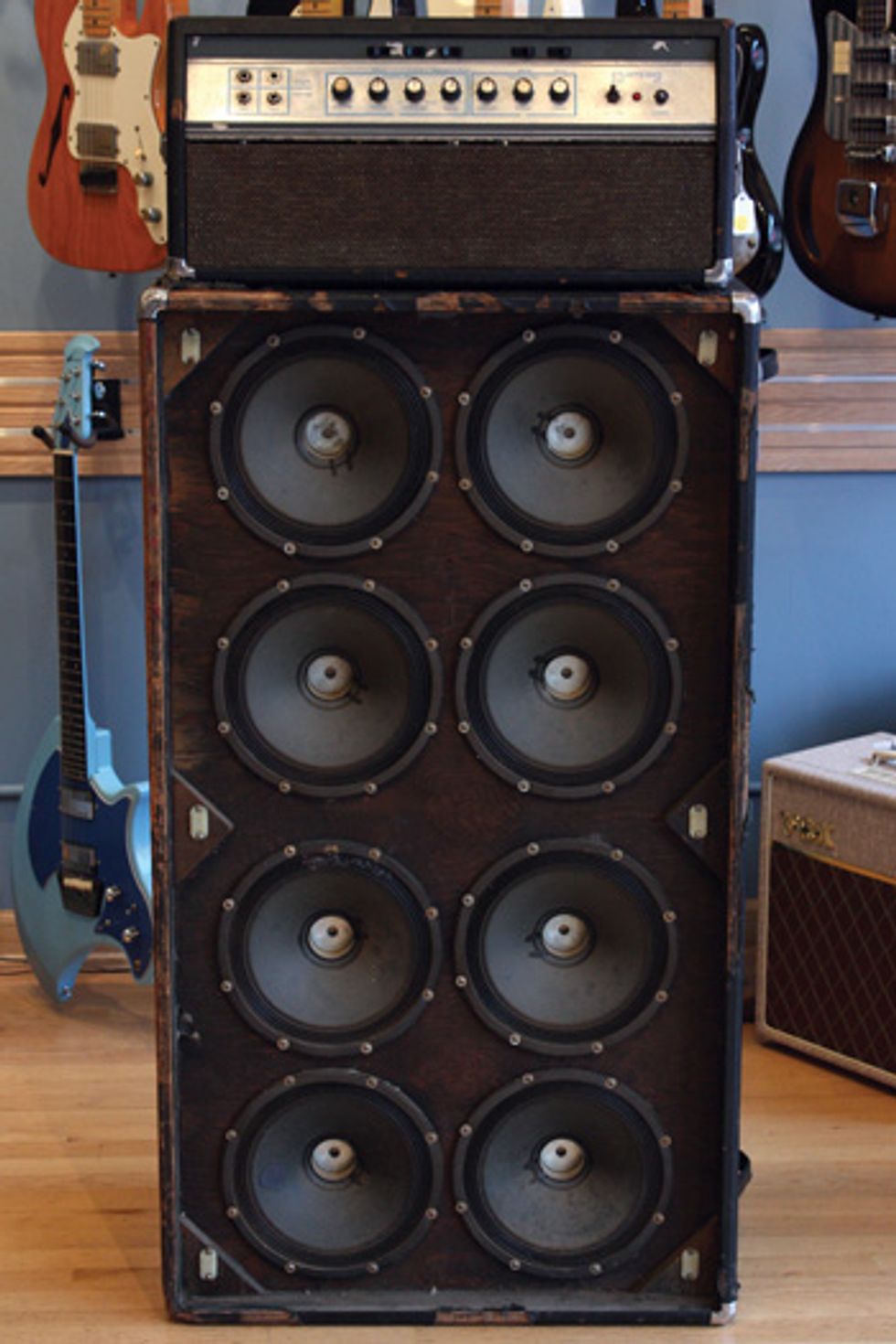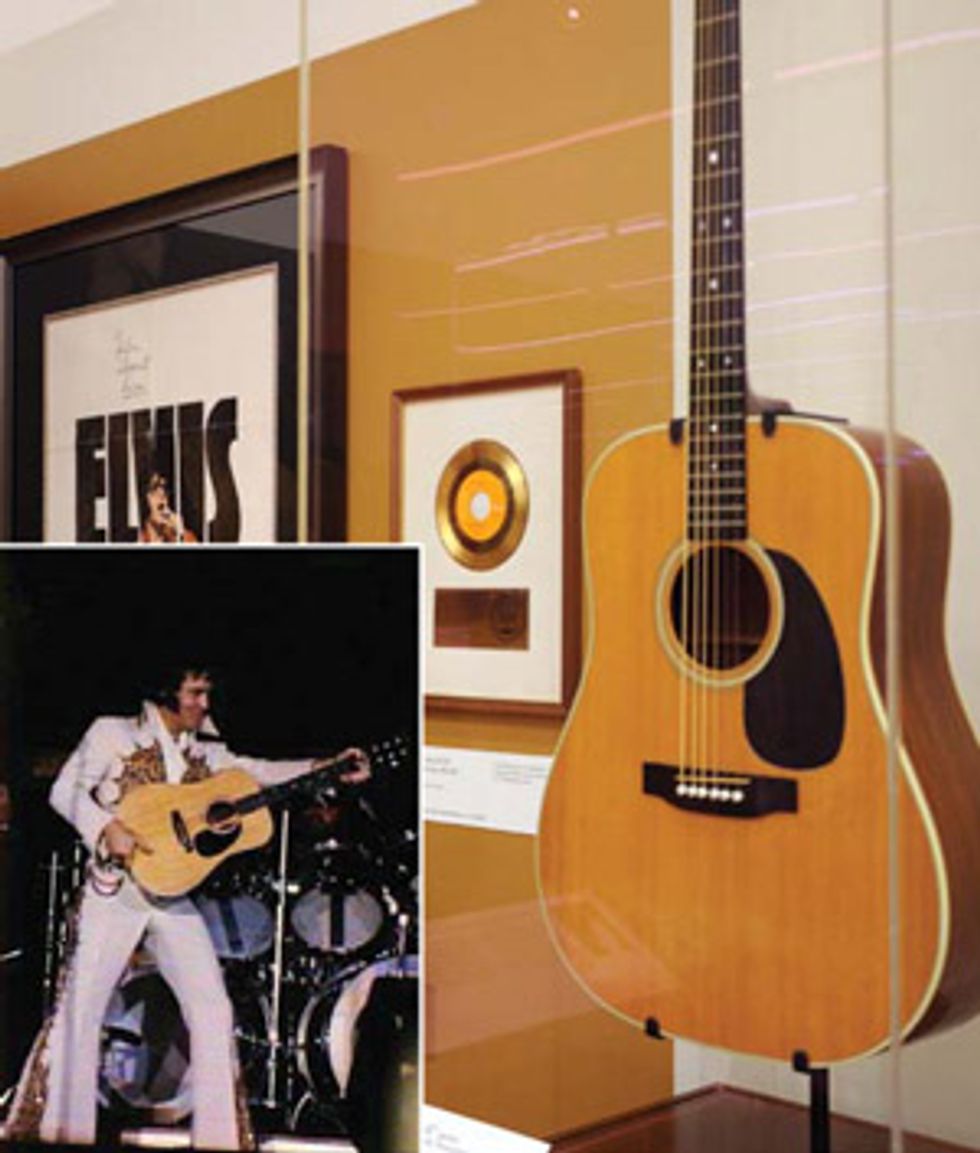
“Before Elvis, there was nothing,” declared John Lennon. “If there hadn’t been Elvis, there wouldn’t have been the Beatles.” While few would dispute Presley’s place in pop-music history, Elvis never had killer chops on the fretboard or the ability to play any of his songs’ signature riffs. Those duties were left to guitarists like Scotty Moore, Jerry Reed, and James Burton. However, that didn’t stop the King from wielding a guitar onstage—though sometimes he used it more as a prop than an instrument. In either case, it was often a Martin D-28.
Shown here is Elvis Presley’s 1975 Martin D-28, serial number 369735. The guitar was used by Presley during his last three years of performing, including the King’s final concert at Market Square Arena in Indianapolis, Indiana, on June 26th, 1977. Presley passed away at his Graceland home just two months after that final show, but this D-28 didn’t surface until 1982 when it was discovered in an upstairs closet. In early 2011, the Musical Instrument Museum in Phoenix, Arizona, acquired the D-28 from Elvis Presley Enterprises as part of the Elvis Presley exhibit that opened in August of last year. But there was a catch. The instrument was damaged in several spots, and EPE asked the MIM to restore the D-28 to its former glory.
“It’s Elvis Presley’s guitar,” says Irene Peters, Head Conservationist at the MIM. “I removed myself from that just a little bit so I could actually focus on the work [laughs].” Peters didn’t just put new strings on the instrument and dust off the fretboard—she gave it a thorough going over.
There was a diagonal break from the nut to the back of the neck. Peters said this made the instrument structurally unstable and was the main reason EPE asked the MIM to perform guitar surgery. She cleaned the crack with compressed air and glued it with a 1:1 mixture of hide glue and rabbit-skin glue before clamping it and leaving to dry overnight.
Other big issues included several open splits on the guitar’s top and sides. Peters used balsa splints and glue to fill the large cracks on the top of the guitar. After shaving the splints and letting the glue dry overnight, she carefully retouched them with watercolor paint. Near the strap button on the guitar’s side, the splits were much smaller and only required an application of glue. Additionally, the pickguard had curled up around its edges because of the adhesive used during a previous repair, which was also partially smeared over the pickguard. For this task, Peters made deft use of a scalpel and dental tools to delicately remove the old adhesive around and underneath the pickguard until the edges could lay flat.
While all these repairs were done to restore the guitar to prime-time working condition, Peters and the MIM did leave the wear-and-tear marks and dings on the guitar’s back. She felt this was appropriate because the marks retain some of the guitar’s character and charm, especially since they are a direct result of Elvis’ onstage showmanship and his ’70s garb, which usually included large, rhinestone-encrusted belts. The other area of wear that was left intact is the back of the neck near the headstock. The exposed wood there came as a result of Presley’s guitar strap repeatedly slipping down the neck during performances and rubbing away the finish.
A special thanks to Elvis Presley Enterprises and Erin Kozak of the Musical Instrument Museum in Phoenix, Arizona, for the opportunity to feature this fine instrument and its story.







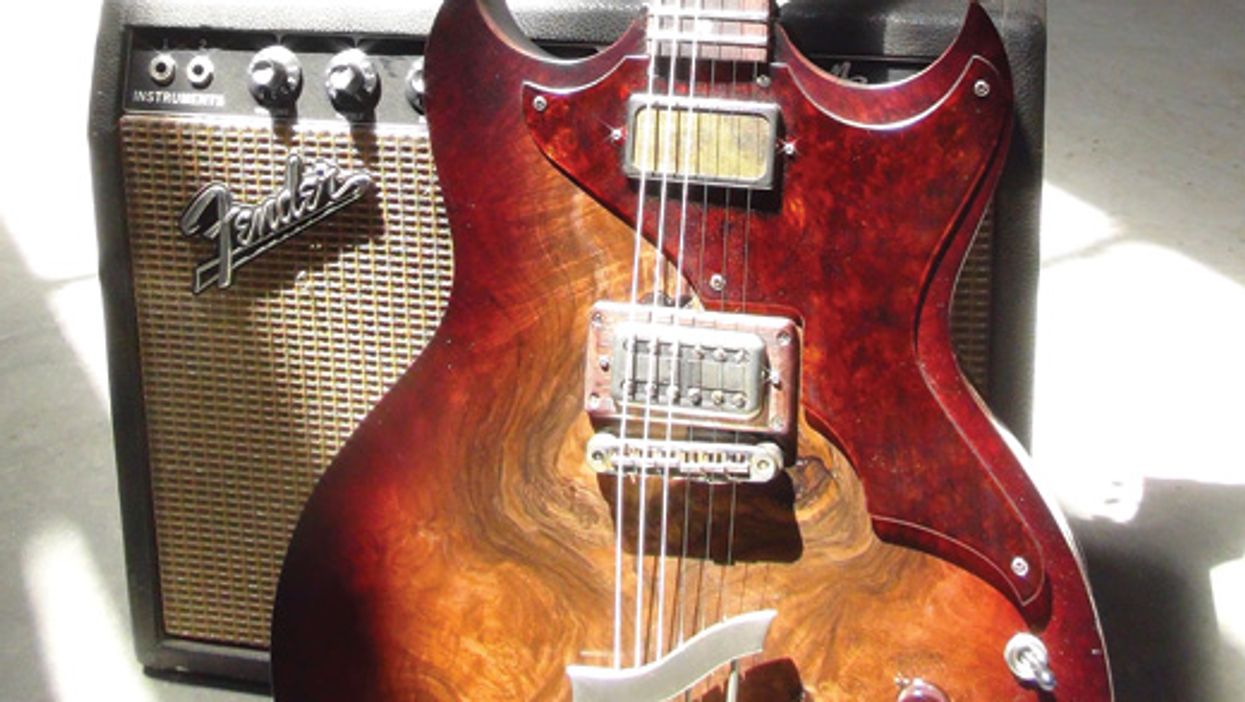


![Rig Rundown: Russian Circles’ Mike Sullivan [2025]](https://www.premierguitar.com/media-library/youtube.jpg?id=62303631&width=1245&height=700&quality=70&coordinates=0%2C0%2C0%2C0)



